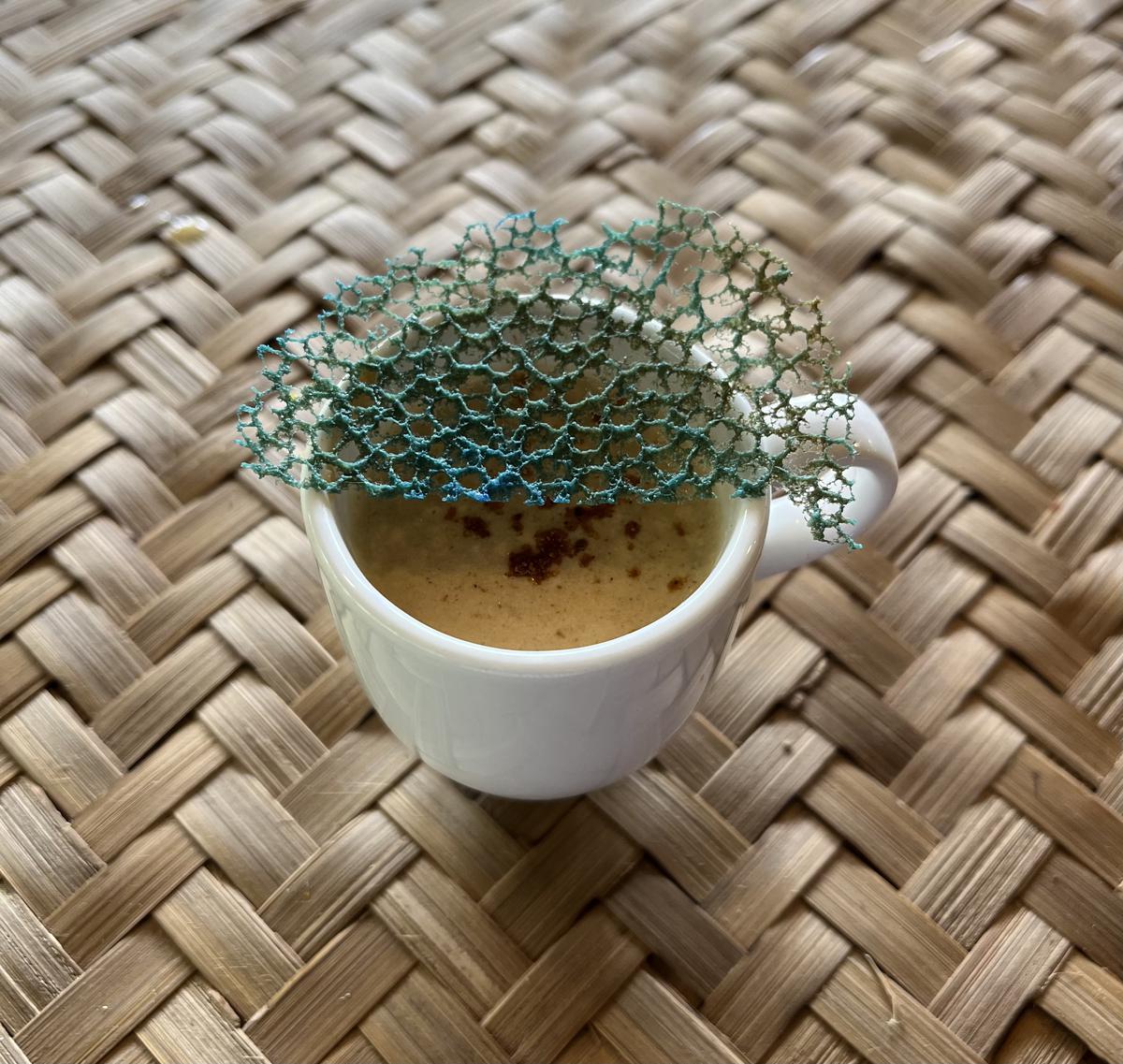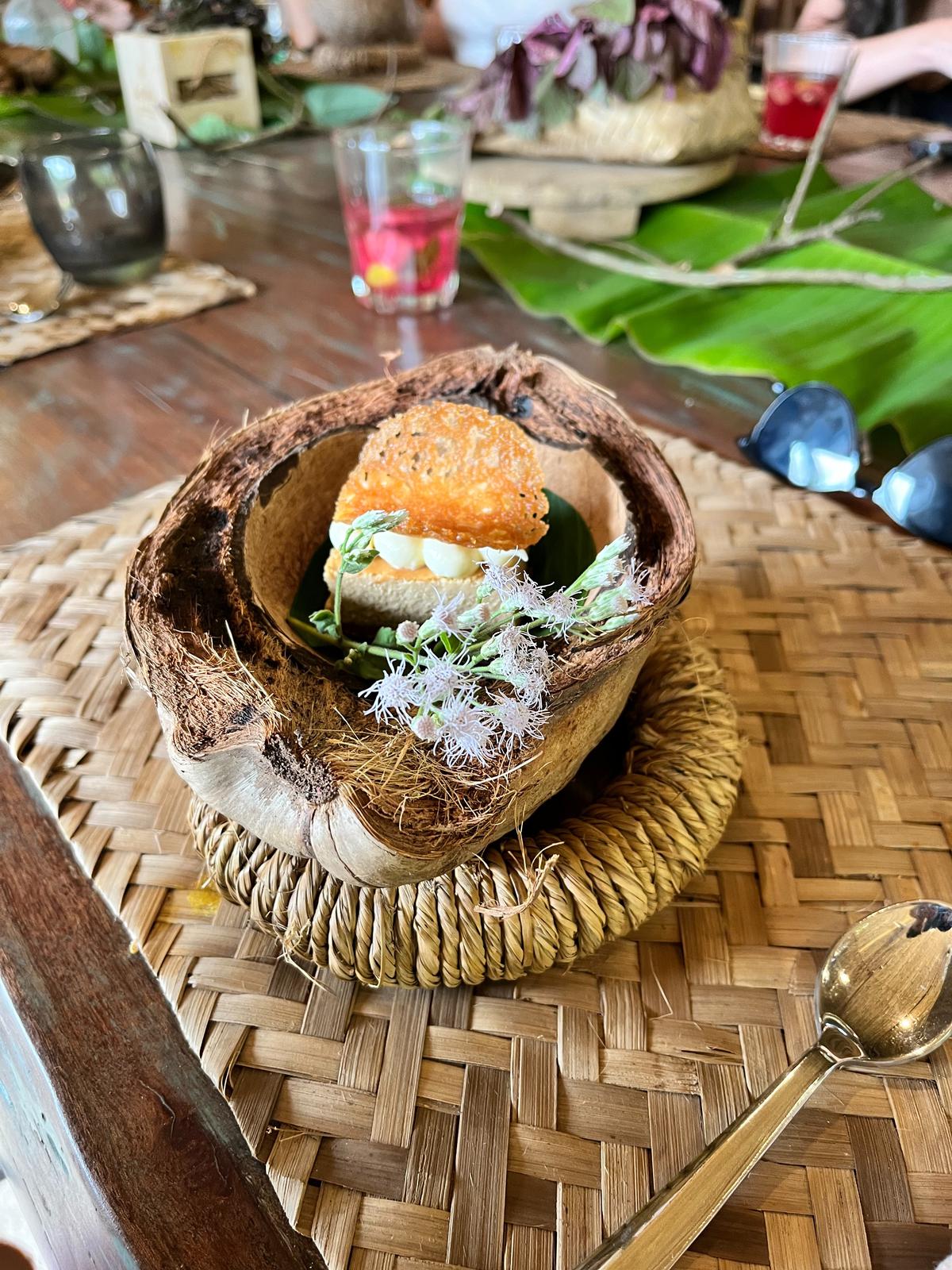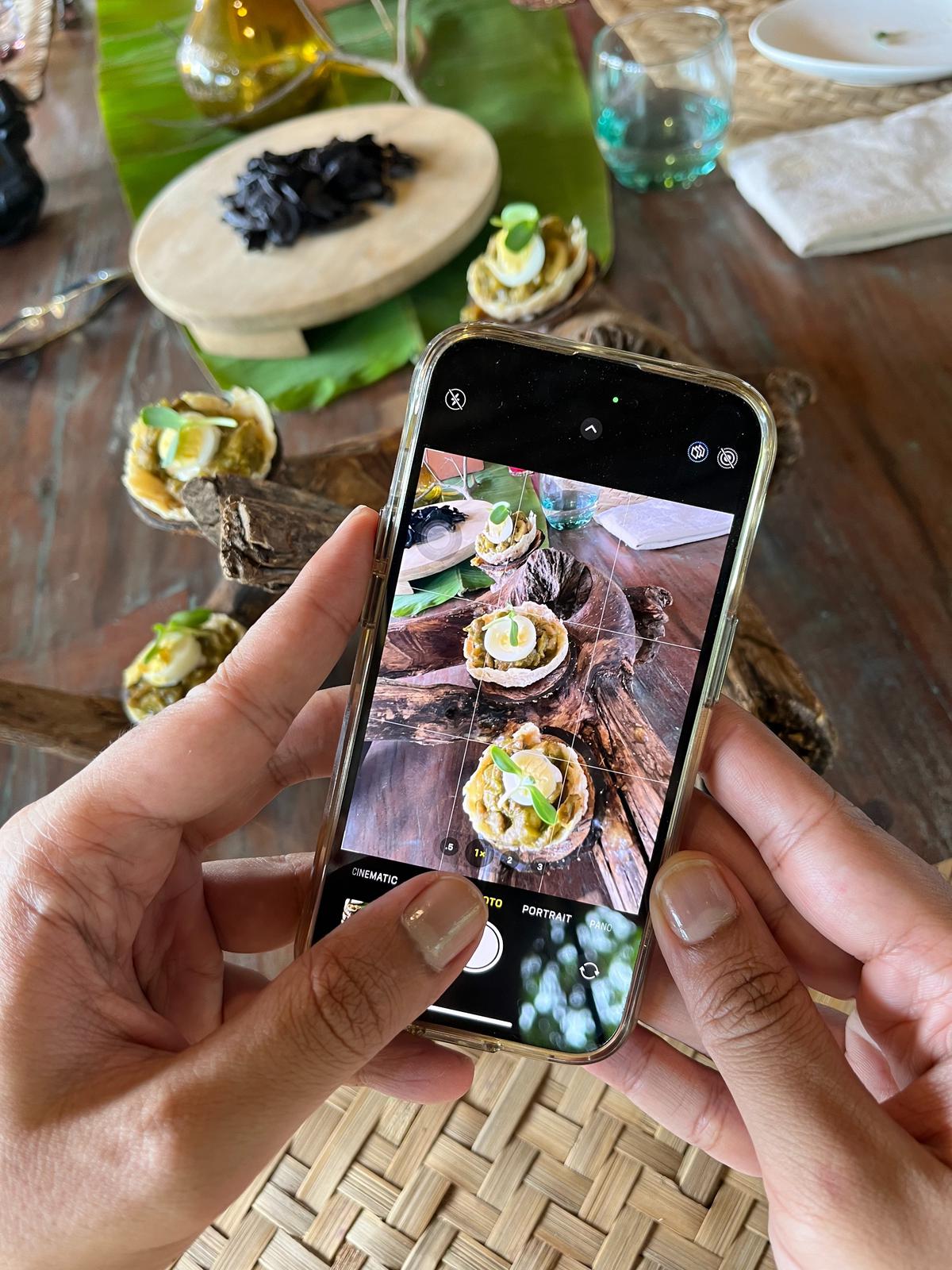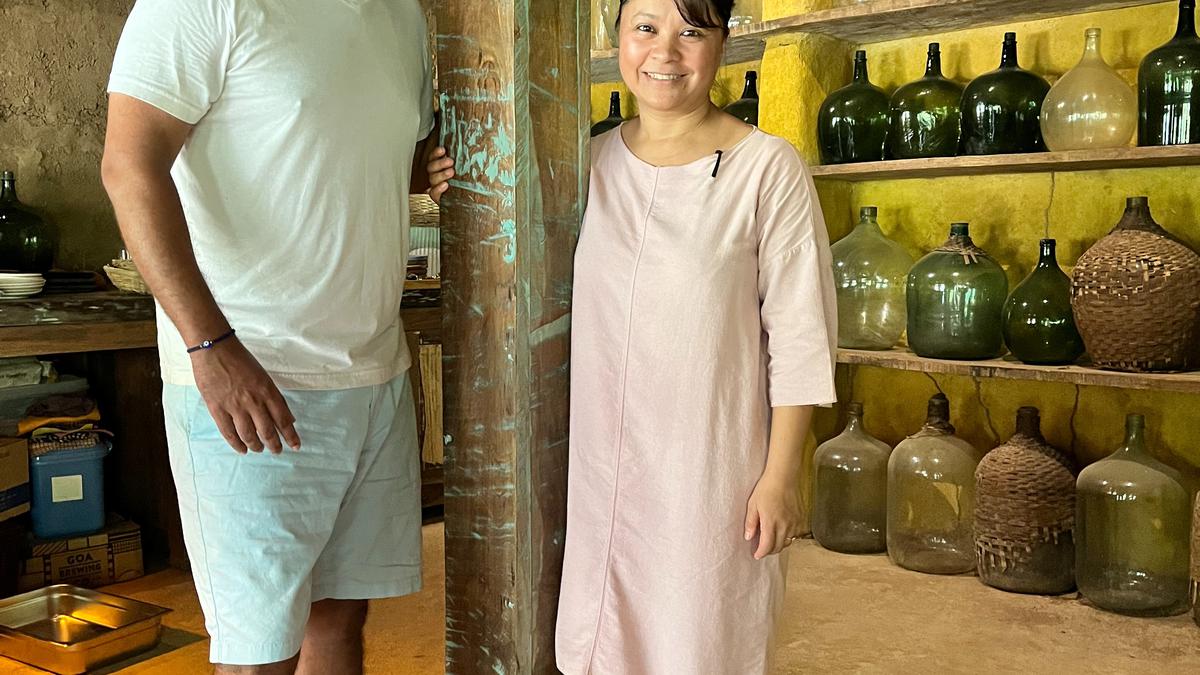In Velim’s Salcete village, South Goa, chef Avinash Martins’s farm-to-fork restaurant C’est L’avi – Table in the Hills (TITH) doles out a seasonal menu that’s revised according to the farming cycle of the ingredients used to dish out authentic Goan cuisine. After an hour-and-a-half long drive from Panjim, we trek for about a 100 metres to reach the eatery’s dining area. It neither promises a backup for power outages nor does it gaurantee a network, but its commitment to serving fresh, farm-sourced food will not make you regret going incommunicado.
.
Chef Avinash at work
| Photo Credit:
prabalika m borah
Burlap ceilings and tin ovens
Run by six people, including Avinash, TITH’s dining area — with a table in the middle — has no walls, but a mud floor, a burlap ceiling with a hay roof and terracotta tiles, and three ceiling fans that creak from the frame of a sturdy ceiling. At the far end of the space are a wash basin and next to is a traditional oven made from tin drums. The restroom for guests is a must-see, it is open to the sky, and one wall is made of cemented, emptied beer bottles.

crab and mushroom xec-xec bisque
| Photo Credit:
prabalika m borah
We are seated at a long table (for 12) made from a tree trunk, and complementing this table are mismatched chairs, bamboo table mats, soft linen napkins and sparkling tableware. It comprises mostly seasonal vegetables and herbs foraged to cook, and ours had red amaranth, sun-dried kokum and Szechuan pepper. The chef says the water served at the venue comes from a spring nearby.. “As for the table decor”, he shares, “It is nice to let people know what they will be eating. I do this to help them identify vegetables and herbs.”

Coconut jaggery cheesecake
| Photo Credit:
Prabalika M Borah
Avinash doesn’t merely cook and serve. With each dish, he tells a story of where the ingredients are sourced from, what memories the food is based on and how the flavours are made to complement each other. We heard the story of pao de queso with kalchi kodi, a tomato basil salsa. Stuffed with cheese, the bread looked like a paniyaram. Though addictive, the serving portion was limited to one for each diner as the chef wanted us to enjoy each course.
Dining at TITH is only by reservation . Since the menu changes every season, Avinash cannot assure the availability of a particular dish when the booking is made. He explains how he recreates his childhood food memories. After all the space used to once house his family’s ancestral rugged farmhouse.
Here, he aims to preserve the heritage of Goan cuisine and his family’s traditional recipes. You can have vegetarian, non-vegetarian and vegan dishes, as well as amazing feni cocktails with kokum juice. “After having lived and loved to appreciate my food and ingredients in this very farmhouse, I couldn’t think of any other place to be able to give the farm to table experience to my guests. In many ways it is a trip down memory lane as I host guests and tell them my food stories from the farm.”
Next, comes a coastal favourite: tender coconut carpaccio with a dressing of sol kadhi, leche de tigre, aam ras and fried quinoa. Every dish that was served had a fairly sweet and tangy touch to it, nothing overpowering.

Nest in the woods
| Photo Credit:
Prabalika M Borah
Avinash says he is not just focussing on feeding what is easily available. Every dish placed in each course has a local context. For instance, seasonal vegetables served fashionably are presented as a locally-inspired dish. Some dishes are also inspired from the foods of the tribal folk. “What is the point of showcasing local ingredients when the food has no connect? I am absolutely proud of the food I grew up eating and I love feeding my guests dishes like kalchi kodi, aam ras etc. and see their eyes lit up upon identifying flavours,” he says.
After a short break, come small cups with a warm drink, a crab and mushroom xec-xec bisque, the consistency of which could be best described as ‘silky’. It was followed by Spanakopita, a contemporary avatar of red amaranth ( laal saag), in roasted cashew butter wrapped in filo sheets, and potato roësti nest, pulled chicken/soy cafreal, quail egg/cherry tomato.
The main course includes Patra de goa: banana leaf-wrapped sea bass, recheado verde, roasted pumpkin cashew hash and turmeric cauda. The names sound French and Italian but come with an Indian soul. Avinash made creative use of ingredients from his farm, the nearby pond. The crab and the fish are from non-commercial fisherfolk whose catch is usually from brackish water.

The entire team of TITH
| Photo Credit:
prabalika m borah
Duck cabidel, smoked duck breast with cabidel sauce and coconut jaggery treacle, made it to the finale. We wrapped up the meal with coconut jaggery cheesecake, cream cheese frosting and brandy schnapp made by Tizz, Avinash’s wife. Vegans could have chocolate pôte de creme, coconut cream and cherry compote.
Dining at TITH brought in not only authentic Goan flavours but also clearly demonstrated that the treatment of ingredients makes a world of difference and that making exotic dishes or a dip need not involve visits to a supermarket selling exotic ingredients.
What: Table in the hills
Where: South Goa (Velim Salcette Goa) 48 hours prior
Reservations +91 8805258277/ minimum six pax (per head ₹5000 including any fenni-based drink)
(The writer was in TITH, Goa at the invitation of Airbnb)






